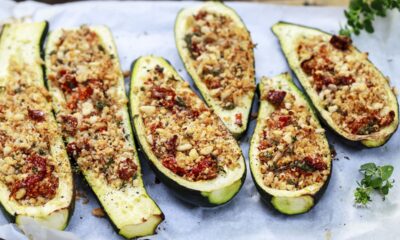Recipes
Rice balls

How are Sicilian arancini made? The recipe is simple and the result is delicious! Let's find out how to prepare this wonderful finger food.
Arancini di riso, also called arancine, are a truly wonderful finger food of the Sicilian tradition. In Sicily they can really be found everywhere, between the streets of the cities and in the various fry shops scattered throughout the towns of the island… but have you ever tried to prepare them at home? There are now so many versions of these delicious rice timballini that we have lost count!
Today we have decided to offer you the classic version with a meat and mozzarella filling: what do you think, shall we get to work? So let's find out right away all the steps of the Sicilian rice arancini recipe!

How to make rice balls: the original recipe
- First of all take care of the rice: boil it in boiling salted water, then dissolve the saffron sachet in a small bowl with hot water and add it to the cooked rice , stirring in the butter and grated cheese.
- Once done, put the rice on a baking tray, leveling it well and covering it with plastic wrap . The rice will have to rest outside the fridge for at least an hour and a half .
- In the meantime, move on to the filling: peel the onion, fry it in oil in a pan and add the minced meat. Salt and pepper, blend with the wine and then add the tomato .
- Leave to cook for at least twenty minutes.
- When the rice has cooled down and the ragù is ready, you can move on to forming the arancini. Take some rice and make a sort of basin, stuff it with a spoonful of meat sauce and diced mozzarella and then close, forming a ball or if you prefer giving them a more tapered shape.
- So move on to the breading : dip your rice balls in the beaten eggs and then in the breadcrumbs.
- Fry in hot oil until the arancini are golden brown and once ready dry them with kitchen paper .
- Enjoy your meal!
Instead of ragù, if you wish, you can also create a filling of ham and mozzarella .
Do you love cooking? Also try all our recipes with rice : you won't regret it!
storage
Now that you have seen the recipe for Sicilian arancini, know that they should be enjoyed at the moment , when they are still hot and with a stringy heart. If you can't finish them all, you can also store them in the refrigerator well wrapped in plastic wrap for about 1-2 days. If you have used all fresh ingredients, you can also freeze them raw in the freezer and fry them if necessary, or cooked and then heat them only in the oven before serving.
But do you say arancini or arancine?
The Sicilian dilemma par excellence: what are these delicious fried and stuffed rice balls called? Are they masculine or feminine? The answer… varies from area to area!
In Palermo, for example, they say arancina, and therefore the term is feminine. On the contrary, in Catania it returns to men. The difference lies in the etymology, since some say it derives from the orange, others instead from the tree, which therefore being orange , turns towards the masculine gender.
Yet Crusca also intervened on the term, putting order on the diatribe: they say arancino and not arancina for reasons of seniority: the term is older and seems to date back to 1857. However, the feminine also remains valid …
If you liked the recipe for Sicilian rice balls, discover the video of the preparation .
History of rice balls: how were they born?
The arancina is a dish originally from Sicily, whose history dates back to the period between the 4th and 11th centuries . Its origin, like many other rice-based dishes in southern Italy, can be attributed to the Arab domination . The Arabs had the custom of forming small balls of rice with the addition of saffron in the palm of the hand and then seasoning them with lamb meat.
As reported by Giambonino da Cremona in the thirteenth century, the Arabs tended to name their meatballs with the name of a fruit that had a certain resemblance, at least in shape. Thus were born the "arancine," inspired, of course, by the rich fruit that the island of Sicily had in abundance: the orange.
The Sicilian version of the arancina, as we know it today, appeared relatively late in official cookbooks, more or less in the 19th century , which has led some to doubt a real connection with Arab cuisine.
Riproduzione riservata © - WT











